
Global Patterns of Brain Drain
Each region, country, and sector exhibits different patterns of skills loss and gain, but some global patterns have been discerned in the statistics. The emigration rate among the tertiary educated has been estimated at 41% for the Caribbean region, 27% for Western Africa, 18% for Eastern Africa, and 16% for Central America (see Table 1 for figures by African countries). […]
Toward a Definition
Among the terms often used to describe skills migration, brain drain is the most prevalent. The term skills migration is employed in this article instead of the more commonly used skilled migration in order to indicate a migration or movement of embodied skills instead of incorrectly suggesting that migration has or can have skills. The term brain drain was coined […]
Brain Drain
Introduction – Not Just Drains and Gains The globalization of international migration has greatly enhanced the international mobility of people with skills. In a global skills market, skills (rather than citizenship and nationality) are the passport to movement from one country to another. Skills do not move evenly across space, however. Underlying current geographical patterns of skills migration are profound […]

Bowman, Isaiah (1878–1950)
Isaiah Bowman was arguably the most influential American geographer of the twentieth century, serving as the ambassador of the discipline to policymakers and the nation at large (Figure 1). Born in 1878 and educated at Harvard and Yale, he began his career with a research focus on geomorphology but soon became interested in human–environment interactions, particularly in the Andes Mountains. He led […]
Current Research Issues
Over the past 20 years, we have witnessed an exponential growth of border studies, predominantly in Europe and North America. The enlargement of the EU in 2005 brought about a change in the meaning and permeability of the Union's internal and external borders, while 9/11 resulted in putting the meaning of the outer borders of the US into a new geopolitical […]
Borderlands and Border Identities
History and the collective memory of a population are sometimes stronger reference points in the construction of identity than regulations and restrictions. Above, the regional identity of the Austrian–Italian borderland population was highlighted. While the border and with it the political regime changed several times over the past century, the population continued to identify with local customs and was also able to […]
Borderlands as Everyday Spaces
Above, borderlands were discussed primarily as cross-border spaces, because the (inter)dependency between both sides of the border is usually very high, which is also true in everyday life. In borderlands, distinct everyday (inter)action spaces can be observed. The population copes with its given realities, which are greatly determined by a number of factors: binational relations, national border policies, the overall economic situation, […]

Borderlands as Functional Spaces
Borderlands are not always marginal or peripheral areas that are poorly developed with bleak economic perspectives. They can also be places that function dynamically, with a high density of shopping centers and industrial production facilities resulting in job opportunities for locals and migrants. Further, borderlands are frequently characterized by a high degree of interdependency among regions within their […]
Borderlands as Normative Spaces
Borderlands are territories that are subordinated to a certain national regime and are therefore subject to the norms of its specific political system. Hence along a border, two extremely different political systems may meet if subjected to extremely different political norms. This is best illustrated through the example mentioned above of North and South Korea. However, in numerous cases borderlands are also […]
The Dependency of Borderlands on Binational Relations
Central governments usually oversee borderlands, which means that border related issues are considered a matter of foreign affairs. Several exceptions, however, such as the Italian Trent South Tyrol region, enjoy a certain degree of autonomy. Even though borderland populations are those who deal with their neighbors on a daily basis, they usually have few or no rights to decide on issues […]

The Permeability of Borders
Permeability, the degree of openness of borders, is of crucial importance for people living in borderlands. The twentieth century saw each type of border regime: closed, semipermeable, and permeable. Some border regimes even ceased to exist, at least in one certain respect, for example, in economic terms. In Europe, the Iron Curtain was experienced as an insurmountable barrier. Inhabitants on […]
Borderlands
Borderlands are spaces where normative systems meet. This can mean that the border is a barrier, hindering and controlling cross border activities and contacts, which has a clear impact on the adjacent borderlands. Borders can also function as bridges with the implication for the residents in the borderlands that they can benefit from the differences in the neighboring states and develop specific […]
Corporeal Geographies
The growing scholarship in corporeal geography is evident in the vast range of studies and approaches to understanding the body. One of the most popular approaches, for geographers and other social scientists, continues to be the cultural inscription approach which draws on post structuralist theories to understand the body as a surface to be etched by cultural and social systems. […]
What Is the Body?
'The body' is often treated as a taken for granted entity that needs no explanation. We all have bodies; however, how and where we use our bodies varies greatly. Bodies are used to ground personal identity and to recognize other people's identity. Bodies are used for the assignment of various roles, tasks, and strategies, for practical action, for reproduction, and […]
Mind/Body Dualism
The seventeenth century philosopher Rene Descartes established a dualistic concept of mind and body.Western rationalist tradition entails a radical separation of body and mind that accords primacy to the mind. Descartes argued that the mind had the conceptual power of intelligence and hence selfhood. The corporeal body was deemed to be a vehicle which could be directed by the mind. This […]
Body, The
The body is a crucial site of sociospatial relations, representation, and identities. It is the place, location, or site of the individual. It is also a site of pain, pleasure, and other emotions around which social definitions of wellness, illness, happiness, and health are constructed. The body is the location of social identities and differences such as gender, sexuality, […]

Bobek, Hans (1903–1990)
Born in Klagenfurt, Bobek's (Figure 1) studies at the University of Innsbruck (1921–26 – geography, history, social sciences) established two key areas of research. On the one hand his dissertation about Innsbruck (Innsbruck, eine Gebirgsstadt, ihr Lebensraum und ihre Erscheinung) established his later interest in urban research as well as in central place theory. The other field of research derived from […]
Biopolitics
Biopolitics and Place Horizontal Fix Geography and Biopower
Geography and Biopower
The sociospatial view of biopolitics is based on the understanding of power as a web of dependencies emerging in and through the constantly evolving settings of human communities and associations. Power grows from within individual and collective initiatives, reactions, and proactions under the fluid conditions of general change. Power has in this view thoroughly permeated our social practices and it […]
Horizontal Fix
The idea of nonlocal biopolitics seems reasonable as a provocative means to influence the attitudes toward globalization and especially its neoliberal features. It functions as a warning for the direction that the humanity as a whole has taken. However, nonlocalism also seems to rise from the type of thinking that connects spatiality with traditional or early modern territorial practices of power. The […]
Biopolitics and Place
Biopolitical interpretation of society is connected to the debate on the changes of life and work conditions in a world where precarious social relations prevail. It underlines the radical mixing of private and public spheres of life, emerging for example in the form of constant reorganization of families and communities under the pressure of neoliberal globalization. Human beings, both as […]
Key Challenges within Biodiversity Mapping
Despite important advances in biodiversity mapping, there remains a variety of critical debates surrounding biodiversity mapping approaches. A key issue is the challenge of collecting and combining appropriate data with which to make conservation decisions. A lack of appropriate data has led to questions over the validity of results, particularly in the contexts of developing countries and the biodiverse tropical regions […]

Biodiversity Mapping: History
The mapping of species distributions has a long history in geography. As far back as the early 1800s, Alexander von Humboldt described the latitudinal and altitudinal distributions of vegetation zones, and others continued such practices until methods were eventually formalized within the subdiscipline of biogeography. In other disciplines, too, particularly biology, the notion that place matters in ecological processes and patterns […]
Biodiversity Mapping
The term 'biodiversity mapping' encompasses a variety of techniques used to represent and analyze patterns of biodiversity, and is almost always used within the framework of environmental conservation. Although maps of biodiversity can be useful simply as a way to represent complex environmental data in an easily interpretable form, usually biodiversity mapping involves further analysis and manipulation of the data in […]
Key Issues and Critical Perspectives
Biodiversity touches nearly every aspect of human affairs in the twenty first century, including environmental sustainability, poverty and social justice, medicine and healthcare, agriculture and food, and economic globalization. As a consequence, a wide range of critical assessments of the concept has emerged, ranging from questions of who should own, control, and benefit from biodiversity to questions of how to […]
The Geography of Biodiversity
Geography is critical to understanding biodiversity. First, biodiversity is unevenly distributed over the surface of the Earth. In general, species diversity increases toward the equator, with the world's most species rich habitats occurring in the belt of tropical moist forests that falls between the Tropics of Capricorn and Cancer. Tropical moist forests are the most species rich terrestrial habitats, covering only 7% […]
The Biodiversity Crisis
Scientists, conservationists, and hunters have been concerned about species extinction, primarily vertebrate species, at the local and regional scales for decades. Toward the end of the nineteenth-century in North America and Europe, bird plumage on hats was a dominant middle class fashion statement. Exotic and colorful bird feathers were in great demand. As a consequence, many bird species were hunted […]
Biodiversity
Biodiversity, a contraction of biological diversity, is a recently invented term whose origins are readily traceable. The invention of the term 'biodiversity' coincides with the emergence, in the 1980s, of two new scientific fields, genetic engineering and conservation biology. Technological advances in genetic engineering resulted in the commodification of genetic material as a natural resource, the raw material for a new […]
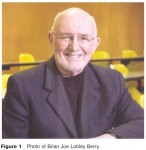
Berry, Brain J. L. (1934–)
Brian Joe Lobley Berry (Figure 1) was born in Stafford, England on 16 February 1934, received his BSc in economics and geography from University College, London in 1955 and his MA (1956) and PhD (1958) in geography from the University of Washington, and is the Lloyd Viel Berkner Regental Professor and Dean of the School of Economic, Political and Policy […]
Berkeley School
Defining the Berkeley School The Berkeley School is a collective term applied to the geographers and their publications that emanated from the work of Carl Sauer (quod vide) and the colleagues and postgraduate students taught by him during his long term as head of the department of geography at Berkeley from 1923 to 1955. By extension it must also include […]
Belonging
The Politics of Belonging Locating Geographies of Belonging Place, Identity, and Belonging Globalization and Belonging
Globalization and Belonging
Consideration of the impact of globalization on our sense of belonging in the world necessitates a multiscalar analysis of concurrent and yet radically uneven processes that take place across global, national, and local contexts. For instance, it is increasingly common for the compression of time and space (a key feature of globalization that geographers address) to be linked with […]
Place, Identity, and Belonging
Geographers approach the politics of place and relate it to identity and belonging in a double move. First, the proliferation of situated studies of identity events in different places provides an ongoing insistence and reminder that place matters. Underlying this insistence is the understanding that things turn out differently in different places, or in other words, that place makes a difference. […]
Locating Geographies of Belonging
Like many of the currents of contemporary social issues, the politics of belonging is not exclusively studied within human geography. Neither is it represented within this, or any other discipline, as a discrete body of work. Rather, issues of belonging emerge from a slip stream of interdisciplinary conversations. They are threaded within and across the related topics of identity, citizenship, […]
The Politics of Belonging
The fact that geographers now consider belonging as an issue of disciplinary interest is indicative of the increasingly fluid, uneven, and above all contested terrains of identity politics and social relations in the early twentyfirst century. Along with the unsettling of fixed and coherent identities associated with the relatively predictable concerns of early modernity, it is becoming more and […]
Prospect
These active areas of research reflect at least some degree of continuity with the project that began in the 1960s as a corrective to spatial science and that became an important catalyst for new waves of research that sought to put the 'human' back into 'human geography'. The current outlook for behavioral geography sensu stricto, however, reflects its […]
Continuity and Marginality
Naturally, the process of marginalization was not immediate. Behavioral geography, albeit now defined sensu stricto as the 'cognitive science' strand, retained its adherents. Its future within academic geography after 1980, however, varied from country to country according to factors such as national research traditions and the extent of institutional support. In Europe, for instance, behavioral geography had only ever […]
Critique
These brief summaries of three representative areas of research within behavioral geography by no means exhaust a field of inquiry that addressed problems of cognition and behavior at all levels from microspace to cosmology in environments ranging from polar tundra to inner areas of metropolitan cities. Not surprisingly given this diversity and the uneasy coexistence of separate schools of thought, […]
Attachment to Place
Interest in attachment to place was not confined to natural hazards research. Cognitive mapping studies had repeatedly shown the significance of attachment to place by revealing the way in which the home and the home neighborhood served as anchoring points in patterns of spatial knowledge and activity. Attention to attachment to place was also an important point of convergence for the […]
Natural Hazards
The fact that people continue to live in places at risk from hazardous events, where 'objective analysis' might be presumed to suggest safer alternative locations, provided the rationale for another strand of cognitive behavioral research by geographers. Natural hazards research combined the geographer's interest in physical environmental processes that apparently lie outside human control with the desire to understand complex patterns […]
Cognitive Maps
The term 'cognitive map' derives from a paper written by Edward Tolman in 1948. Entitled 'Cognitive maps in rats and men', although mainly about rats, it put forward the idea that the rodents built up so called 'cognitive maps' over time that enabled them to steer their way about their environments. Tolman compared the rat's brain to the central office of […]
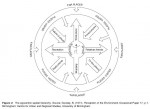
Consolidation
As with many embryonic fields of study, the work of the pioneers was followed by extensive efforts to consolidate knowledge. A supportive infrastructure of discussion groups and symposia developed first in North America, with the subsequent foundation of newsletters, journals, and edited collections allowing wider dissemination of materials. For example, the first symposium on 'environmental perception and behavior', held at the […]
Early Development
The 1960s' lasting reputation as a decade of rapid and revolutionary change is mirrored in many fields of intellectual and creative endeavor in which practitioners seized the opportunity to challenge doctrinal orthodoxy and question established practices. Geography was no exception. Restlessness with the prevailing idea of geography as a compendium of factual material about regions of the world combined with an […]
Behavioral Geography
Defining terms is an unusually important activity in the case of behavioural geography, since it has two historically contingent meanings. The first views it sensu lato as a movement with multidisciplinary leanings that enjoyed its greatest influence between the years 1965 and 1980. Broadly coterminous with what others variously referred to as 'environmental perception', 'behavioral and perceptual geography' or 'image […]
Becomings/Geographies
Although diverse, and often divergent, the philosophical tendencies outlined above have a number of important implications for the theoretical, empirical, and political commitments of human geography. First, and perhaps most obviously, they precipitate sustained reflection on the nature of space. To think of space in relation to becoming is to challenge the familiar spatial coordinates of Euclidean geometry. Space is not […]
A Brief Genealogy of Becoming
The increasing visibility of ideas of becoming in human geography might easily be read as a conceptual response to the spatiotemporal disjunctions of modernity, postmodernity, or globalization. Becoming, more than being, seems to capture the dynamic logics of worlds where the coordinates of identity and place seem increasingly fluid. Yet philosophies of flux are not mere symptoms or reflections of […]
Becoming
Becoming designates a process based ontology of movement, in which the world is conceived of as a dynamic and open ended set of relational transformations. Becoming is frequently distinguished from and sometimes opposed to being, with the latter suggesting essential and relatively enduring entities (real or ideal) upon which existence, thought, ethics, etc., can be grounded. For philosophies of […]
Beaujeu-Garnier, J.
Jacqueline Beaujeu Garnier (1917–95) was the first woman in France to obtain a Doctorat d'Etat in geography (1947) and the first female geographer to become a university professor (in 1948 at Lille and from 1960 to 1986 in the Sorbonne). She was also incredibly active in numerous academic institutions and editorial bodies in French geography from the 1960s onward. An […]
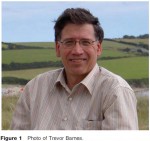
Barnes, T.
Trevor Barnes (Figure 1) was born in London, England in 1956. Having grown up in Cornwall, he studied economics and geography at University College London between 1975 and 1978. Barnes completed MA and PhD degrees in geography at the University of Minnesota and since 1983 has taught at the University of British Columbia in Vancouver, Canada. He was promoted […]

Modernity and Development
The Legacy of Delayed Development The scale of the differences betweenWest and East in the Ottoman period is widely considered to be the reason for the present lack of development of the peninsula; the front line between two civilizations is seen as having acted as a barrier, retarding the diffusion of the innovations of the modern world initiated by […]
Balkan Civilization – Similarity Is Not Synonymous with Cohesion
The Balkan civilization is difficult to apprehend on account of the negative connotations of the term balkanization. When endeavoring to understand the fragmentation that is the main characteristic, there are two obvious pitfalls: determinism of the natural environment and determinism of history and culture, including repeated violence between groups that are identified sometimes by lifestyle, sometimes by position with respect […]
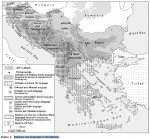
A Geopolitical Region Where Major Powers Meet: The East, the West, an ‘In-Between’ Europe
On 1 January 2006, the peninsula comprised eight states: Greece, Albania, Bulgaria, and, resulting from the dismantling of Yugoslavia, Macedonia, Serbia Monte negro, Bosnia Herzegovina, Slovenia, and Croatia. Turkey also has a fragment, and its first city, Istanbul. Romania is also sometimes classified as a Balkan state. The de composition of what was the Yugoslav territory until 1991 is still underway: Bosnia […]
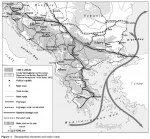
Balkans
The Meaning of the Word 'Balkan', the Border Issue Defining what the Balkans are is a complex question from the outset, because of the interweaving of fact and representation. Balkan is a Turkish word meaning 'mountain' referring to the Stara Planina, the east–west mountain range that cuts across Bulgaria. The German geographer Zeune used the term Balkan peninsula to identify the […]
Aircraft
The technological advances of aircraft over the past century of manned flight have led to monumental advances in the geographic coverage of air transport. Propeller driven piston engines on the first commercial aircraft limited the range, speed, and number of passengers that the aircraft were able to accommodate. One of the first aircraft to enter commercial service was […]
Airports
The geography of airports can be broken into two key areas: the study of airport sites and the study of airport functions. The geography of an airport site looks at the airport at three different scales: international/regional/national scale, local scale, and site specific scale. At the international/regional/national scale the airport's location and function within a larger air transportation network is […]

Airlines
The early international airlines began their services through the mandate of national governments and were used, in the case of some European countries, to serve and reach outlying colonial outposts. It was the location of these outposts and colonial holdings that dictated the early linear networks operated by these international airlines. Early American airlines were used primarily as mail carriers and some […]
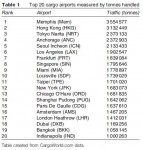
Aviation
The study of air transport geography can be divided into three sections of inquiry: airlines/industry, airports, and aircraft. Air transport geographers are generally concerned with examining the role these different components have, either separately or in combination, in the geographic distribution of human activities across space. The majority of air passenger and cargo traffic is concentrated in and between three regions: North America, […]
Avant-Garde: Translating the Esthetic into Politics
Addressing the conceptual purchase of the avant-garde, one can combine the relationship of the esthetic to the political by unpacking the arts into three key categories – that of experience, performance, and expression – while distilling and summarizing their respective influence as manifested through, and housed within, the spatialities of particular institutions and communities. Within this telling of the avant-garde, it is […]
Avant-Garde/Avant-Garde Geographies
The avant-garde is predominantly a modernist term for a movement in art, culture, and politics that cuts at the vanguard of ideas both in terms of their mode of expression and the social impact that they have for everyday living. As a term, it does however have roots in the Renaissance for signaling an advanced position in the arts, and further […]
Auto-Photography. Challenges
There are several practical challenges for using auto-photography in human geographic research. These include the cost of cameras and film development, the likelihood that photo quality will be poor and inconsistent, and the possibility that participants will drop out of the research project over time. Conceptual challenges also exist. In human geography there is very little theoretical or conceptual work […]
Purposes of Auto-Photography
Photographs derived from the auto-photographic field method contribute to ethnographic research in numerous ways. First, because photos are seen, they are considered visual data. In geography the visual has always been an important dimension of scholarship and the production of knowledge, for example, through cartography and landscape analysis. Photographs taken by research subjects consist of a radically different genre of visual […]
Genealogy of Auto-Photography
Auto-photography is an ethnographic research method that has its historical roots in nineteenth-century anthropology. In many ways, ethnography and photographic methodologies were born together. Photos were often taken in the field and then presented to academic and popular audiences to show the 'savage' culture faraway in lands (or the 'natives' on colonized lands like in North America and Australia) and […]
Auto-Photography
Auto-photography usually entails the following steps: first, a researcher gives cameras to research subjects and asks them to photograph particular places and people that are relevant to the topic of the research project. (In some cases, cameras may be distributed with no prior information about the research given, however.) These instructions may be prefaced by an initial interview or other participatory research […]
Autoethnographies
A strategy of combining autoethnography that is committed to self reflexivity with an autoethnographic sensibility allows for more complex representation and analysis of the research setting. Representing the research setting as one in which knowledge is co produced, in which researchers use autoethnography of the first type along with recognizing the many moments in which ethnographic subjects disclose knowledge, […]
An Autoethnographic Sensibility
One response to these criticisms may come from employing an autoethnographic sensibility, the second way human geographers might approach autoethnography. Geographers David Butz and Kathryn Besio outline what they call an autoethnographic sensibility, drawing from the work of literary critic Mary Louise Pratt. Pratt conceptualizes autoethnographic texts as those produced by indigenous others in order to represent themselves to their others […]
Autobiography and Ethnography
In the first and perhaps most intuitively accessible understanding to researchers, autoethnography refers to a type of ethnographic writing that seeks to combine elements of 'autobiography' with 'ethnography'. The 'auto' in autoethnography, the 'self ', is the researcher, most often a Western trained researcher, who draws upon their own biographies to foreground social relations. However, there are also 'native' ethnographers who work from […]
Autoethnography
Autoethnography, like ethnography, is both method and text. That is, it is a textual record of people and places, and way of doing qualitative research that relies on participant observation or using the ethnographic method of embedding the researcher in settings in order to write about social groups unlike those of the re searcher. In contrast to ethnography, autoethnography is distinguishable by […]
Autobiography in Geography
The place of autobiography in geography is currently in flux. On the one hand, it is fair to say that ''autobiographical approaches are not widely accepted as a standard method for geographic research'' (Moss, 2001a: 190). In part, that lack of acceptance can be attributed to a lingering positivism that devalues autobiography because it does not produce 'objective' […]
Four Forms
In trying to pinpoint exactly what is an autobiography, it is worth trying to understand its relationship to similar forms of inquiry. Biography, ethnography, and auto ethnography are perhaps the closest cognates. On the surface, there are differences clear enough one might even be tempted to put them in a matrix (see Table 1). It appears that autobiography is what a […]
Autobiography
As I understand it, the idea of an article like this is for the editors to choose an expert on a topic, and ask that expert to call upon his or her vast existing knowledge to communicate what we currently know about the topic. I am not an expert on the use of autobiography in geography, or I do […]

A Contemporary Australasia?
If the link between colonial imaginations of Australasia as a distinct world region can be seen to neatly translate onto contemporary scientific classification and nomenclature, the story is not nearly so simple in the spheres of politics and society. Most simply, there is no clear wisdom on what countries are contained in the geopolitical entity known as Australasia, and whether […]

Australasia as Ecoregion
The apex of the use of Australasia as a place name stemmed from its acceptance as a scientific term to describe a unique ecoregion. This emphasis on ecological uniqueness was, along with theories about racial difference, a central concern of Europeans in their attempts to distinguish and classify world regions. Early evidence of a distinction between Asia and lands […]
Colonial Origins and Imaginations
Australasia is an invented name, the product of European desires to scientifically describe and classify the world's geography. The name Australasia is the English translation of Australasie, first coined by Charles de Brosses, an aristocratic French magistrate and politician (he became president of the Burgundy parliament), who collected, synthesized, and translated, into French, accounts of all the voyages made to the […]
Australasia
Australasia is a geographic place name for a large region of the southern part of the world. As to which countries are considered a part of Australasia has not been universally defined. Different countries are included depending on the use of the term, and throughout its history, Australasia has often been used interchangeably (and usually no more accurately) with […]
Atlas Information Systems
As stated before, atlases can be considered comprehensive spatial information systems of a particular region irrespective of their production and presentation media. They represent the complex human and physical environment in a narrative based collection of applicationspecific, synoptic, and significant map and other graphics. This may include static data presentations like static maps, tables, text, and images, as well […]
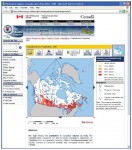
Dissemination Medium
Paper Atlases Traditionally, atlases have been and are still published in book form or as single map sheets assembled in a map case. Such conventional atlases offer the user a clear structure. Although paper atlases allow for browsing through the different chapters, they also guide the user by their sequential setup. Atlas chapters and themes are arranged to facilitate the best […]
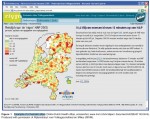
Types of Atlases
Atlases, whether in conventional or electronic form, portray (1) a clearly defined region geographically or (2) a specific topic or theme. General-Reference Atlases Atlases can depict a specific area or cover the entire Earth. The latter are often referred to as general refer ence atlases and contain mainly small scale physical maps to emphasize locations of places and their spatial relationships. […]
Historical Background
The development of atlases can be divided into different stages. The first stage of atlas development is defined by Ptolemy's Guide to Geography (Geographike hyphegesis), which dates back to the second century AD. In volume 8 of the guide Ptolemy included instructions on how to show the Earth in maps and also included 26 maps. The guide was unknown until […]
Atlases
Every systematic application specific collection of maps with uniform formal structure and design is termed an atlas after a book collection of world maps by the German Dutch cartographer Gerardus Mercator more than four centuries ago. Since Mercator's time the term atlas implies not only a specific map content, a system of map models based on a common narrative, but […]
Asia as Political Ideology and Populist Movement
''My Asiatic blood has always called to other Asiatics. In my dreams, both sleeping and waking, I have heard the voice of Asia calling to her childreny. TodayyI seem to hearythe same voice of Asia gathering her children together. It is the call of our Asiatic blood. This is not the time to think with our minds; this is the […]
Asia as an Asian Intellectual Project
Does Asia Exist? In 1963, provoked by the appearance of yet another Western book questioning the validity of Asia as a meaningful label for such a vast and diverse space, Indian journalist Romesh Thapar regarded the question of Asia's existence with understandable indignation. But Thapar did concede that the ''image'' of Asia is ''blurred.'' ''Yet if we act with good sense,'' […]
Asia as Other
What is Asia? As Edward Said observed in Orientalism (1978), Asia has played a crucial role in the stories Europe has told about itself. It has done so by always occupying the other side of Europe in a set of binary couplets: rational–emotional, reason–faith, analytical–aesthetic, and so on. Perhaps the two pairings among these which have had the most purchase have […]
Asia
As the largest of the world's continents, comprising a third of the earth's land area and some two thirds of the earth's population, Asia's size and diversity have always represented a challenge to the categories and conventions of regional geography. Overcoming this challenge has preoccupied a great deal of work within and beyond the discipline. It has become standard practice, for […]
Intelligent Decision Support System – An Integration
In geographical analysis, the demand on domain specific knowledge, technical know hows, and accessibility to data is tremendous. It is difficult to make good decisions without powerful systems to provide, in an integrative way, supports in various phases of the decision making process. Taking the three phase process as an example, the system needs to support, for instance, problem diagnosis, access and […]

Acquisition of Spatial Knowledge
Symbolic approaches to spatial knowledge representationand inference are discussed and applied to construct expert systems in the previous section. Logic (fuzzy and nonfuzzy), production systems, semantic networks, frames, object oriented programming, and their hybrids all belong to symbolic systems in which knowledge is modeled by symbols. Intelligence is realized by a symbolic structure in which symbols can be manipulated and reasoning […]
Expert Systems for Domain-Specific Problems
The major challenge in the design of intelligent spatial reasoning systems lies on our ability to build into a system mechanisms to memorize and use knowledge extracted from domain specific experts, and to automatically acquire knowledge from voluminous but incomplete information through learning by examples. Such system can facilitate machine reasoning in a commonly encountered environment where knowledge (in terms […]
Spatial Knowledge Representation and Inference
Geographical knowledge may be structured or unstructured. We may organize our knowledge in a highly structured form so that problems can be solved by sys tematic and rigid procedures. Mathematical models, statistical methods, and heuristic procedures are knowledge in procedural form. They follow a rigid framework for the representation and analysis of structures and processes in space and time. Procedural […]
Artificial Intelligence and Expert Systems
With our ability to amass information from various sources, geographers are encountering information explosion in their analyses. Facing an almost unabated growth of information, it is absolutely necessary to apply geographical knowledge and expertise to streamline, analyze, manage, digest, visualize, and integrate information in an efficient and effective manner. Without knowledge, information becomes static and perhaps useless in our analysis of […]
Invisible Data Mappers: Artists Who Use Cartographic Metaphors to Visualize Informational Territories Such as the Stock Market, the Internet, or the Human Genome
The twentieth century witnessed many technological and social changes as people developed new ways of sensing the world, communicating with each other, killing each other, and moving through space. These changes helped spawn what might be called 'informational territories' – virtual, invisible, infinitely small or large, multidimen sional, time based, and even cultural and political 'spaces'. The Internet, the stock market, the […]
Agents and Actors: Artists Who Make Maps or Engage in Situated, Locational Activities in Order to Challenge the Status Quo or Change the World
In the twentieth century, particularly during the destruction, chaos, and geo scrambling of World War I, avant-garde artists began not only to take on the iconography of the map but also to envision themselves in the roles of mapmakers, which is to say, capable of leveraging the authority of the map to change the shape of the world. The […]

Symbol Saboteurs: Artists Who Use the Visual Iconography of the Map to Reference Personal, Fictional, Utopian, or Metaphorical Places
As a result of advances in printing and image reproduction technologies, by the late nineteenth-century, maps and globes had become affairs of everyday life in Western nation states. Atlases, such as Blackie's Imperial Atlas of Modern Geography (1860), were standard fare in children's education in the late nineteenth-century. The classroom globe served to instruct pupils as to the shape of their […]

Art and Cartography
In the last century, and especially in the last 30 years, artists have made maps, subverted maps, performed itineraries, imagined territories, contested borders, charted the invisible, and hacked physical, virtual, and hybrid spaces in the name of cartography. Numerous names have been suggested for various strains of this intersection: 'psychogeography', 'locative media', 'experimental geography', 'site specific art', 'new genre […]
‘Nature’, the Economy, and Changing Research Initiatives
Post war governments utilized the Arctic as nuclear laboratory, but a contrary ecological consciousness emerged amidst efforts of 'big science' to control nature. While the Soviets relocated Nenets to conduct tests on Novaya Zemlya, the US Atomic Energy Commission (AEC) tested bombs on Amchitka Island, Alaska. This then inspired the organization of Greenpeace. The AEC's peacetime efforts had included plans […]
Science and State Colonialisms
In the early twentieth century, arctic science continued its service to governments and nations. Little was left of the terra incognita that Wright studied 40 years later. Rather than being unknown, many narratives of arctic lands had accrued in imperial archives. Most shorelines had been mapped and aerial surveys would soon be introduced. Sublime landscapes that had once leant currency to grand […]
Migration, Expedition, and Inscription
In his address to the Association of American Geographers in January 1937, W.H. Hobbs began a familiar historiography of 'Exploration within the Arctic Region' around the year 330 BC, when a Greek geographer named Pytheas began a 6 year voyage to the north coast of Britain. There, Pytheas heard about a land called Thule, which he then claimed to reach […]
Arctic
With regularity, studies of the Arctic begin with comments about the difficulties of defining the region. Its name is derived from the Greek word, Arktos (meaning bear), for the constellation around the Pole Star. In its earlier meaning, the Arctic Circle defined that part of the sky, but it now refers to a line of latitude (currently 661330 N) north […]
Archive Fever?
Compared to studies of documentation and the material of documents in geography, the disciplinary effort that has been put into reconceptualizing the archives – the locations where such documents are preserved – is far more explicit and fecund, making a notable change. Up to the 1980s, any mention of archives was usually confined to footnotes. When they were discussed, this would […]
Documents of a Material Culture
The fascination with archives and documents as cultural artifacts has arisen in geography for a number of reasons. First, digital publication software and the globalized workforce that assembles cameras, scanners, and other inexpensive mechanical reproduction technologies have enabled scholars to produce facsimiles of particular documents, such that they can then pay close attention to the form and quality of a document through […]
Archives
Document based and archival research has been quietly undergoing a wholly remarkable change over the last decade. Once largely set aside in human geography as a means to an end, documents and archives are no longer seen simply as a goldmine for the extraction of select elements and valuable information, or as the source of data about some other interesting phenomenon […]
Applied Geography and Public Policy
The practical value of the applied geographical approach has been demonstrated in the foregoing discussion. Applied geographers are actively engaged in investigating the causes and ameliorating the effects of 'natural' phenomena including acid precipitation, landslides, and flooding. Key issues of environmental change and management also represent a focus for applied geographical research with significant contributions being made in relation to […]